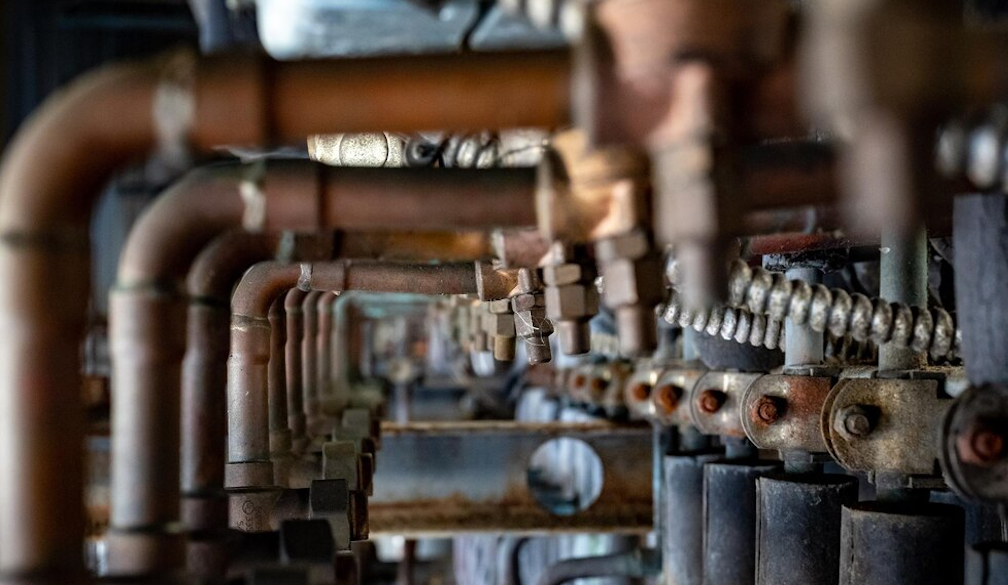The Dilemma of Copper Piping in City Utilities: Problems, Solutions, and Considerations

Copper piping has long been a reliable choice for its durability and corrosion resistance. However, when these copper pipes are tied into city utilities, a host of problems can arise, posing challenges for homeowners and necessitating the intervention of skilled plumbers.
Let’s discuss the issues associated with copper piping in city utilities, discuss how plumber Sydney can address these challenges, delve into the expenses related to replacing aging copper piping systems, and finally, consider the wisdom of purchasing a house with old copper piping tied into the city utility lines.
Problems with Copper Piping in City Utilities
· Corrosion Concerns:
One of the primary issues with copper piping tied into city utilities is corrosion. Over time, exposure to different water qualities and chemicals in the city water supply can lead to corrosion, resulting in leaks and compromised water quality. Plumbers often encounter cases where the insides of copper pipes deteriorate, affecting water flow and causing damage to the entire plumbing system.
· Water Quality Issues:
As copper pipes corrode, they can introduce contaminants into the water supply. This is not only a health concern but can also damage appliances connected to the plumbing system. Plumber Sydney play a crucial role in assessing water quality and implementing solutions to mitigate the impact of corroded copper pipes.
· Pinhole Leaks:
Pinhole leaks are a common problem in copper piping systems, especially in areas with aggressive water conditions. These tiny leaks can go unnoticed for a long time, leading to water damage, mold growth, and structural issues. Plumbers employ various techniques, such as epoxy lining or complete pipe replacement, to address these leaks.
· Scaling and Reduced Water Flow:
Mineral deposits can accumulate inside copper pipes over time, leading to scaling issues that restrict water flow. Plumbers may need to use descaling methods or, in severe cases, recommend replacing the affected pipes to restore optimal water flow.
Solving Copper Piping Issues
· Professional Inspection:
Plumbers can conduct thorough inspections of the copper piping system to identify corrosion, leaks, and other potential problems. This proactive approach allows for early intervention and prevents more extensive damage.
· Epoxy Lining:
In cases where pinhole leaks are detected, plumbers may recommend epoxy lining. This involves coating the interior of the pipes with a protective layer, sealing small leaks and preventing further corrosion.
· Pipe Replacement:
When copper pipes are extensively corroded or damaged, the best solution may be a complete replacement. Plumbers can replace old copper pipes with newer, corrosion-resistant materials, ensuring a more reliable and durable plumbing system.
The Cost of Replacing Copper Piping Systems
The cost of replacing old copper piping systems can vary depending on the extent of the damage, the size of the plumbing network, and the materials chosen for replacement. Generally, the expenses can include:
Labor Costs:The labor involved in replacing copper pipes, including removing the old pipes, installing new ones, and conducting any necessary repairs, constitutes a significant portion of the overall cost.
Material Costs:The type of material chosen for replacement pipes influences the cost. While copper remains a popular choice, alternative materials like PEX (cross-linked polyethylene) may offer a cost-effective and durable solution.
Access and Complexity:The accessibility of plumbing lines and the complexity of the installation process can impact costs. If pipes are located in hard-to-reach areas, additional labor and time may be required, contributing to higher expenses.
Additional Repairs:In some cases, plumbers may discover additional issues during the replacement process, such as damaged fixtures or connections. Addressing these problems can add to the overall cost of the project.
Considering a House with Old Copper Piping
Before purchasing a house with old copper piping tied into city utility lines, it's crucial to weigh the pros and cons:
A. Pros:
Sturdy Foundation:Copper piping, when properly maintained, can provide a robust plumbing infrastructure that has stood the test of time.
Potential Negotiation:Knowing about the presence of old copper pipes allows prospective buyers to negotiate the purchase price, considering the potential future expenses associated with pipe replacement.
B. Cons:
Maintenance Costs:The impending need for copper pipe replacement can translate into substantial maintenance costs, affecting the overall affordability of the property.
Water Quality Concerns:The risk of water contamination due to corroded copper pipes may pose health concerns, making it imperative to invest in water quality testing and potential remediation.
Insurance Considerations:Some insurance providers may be wary of properties with old plumbing systems, potentially leading to higher premiums or policy restrictions.
Final thoughts
Thus, while copper piping has been a stalwart choice in plumbing for its durability, tying it into city utilities poses challenges that necessitate the expertise of plumbers. Corrosion, water quality issues, pinhole leaks, and reduced water flow are common problems that require proactive solutions. Plumbers can employ various techniques, from epoxy lining to complete pipe replacement, to address these issues.
Replacing old copper piping systems comes with expenses related to labor, materials, access, and potential additional repairs. Before purchasing a house with old copper piping tied into city utility lines, prospective buyers should carefully consider the pros and cons.













